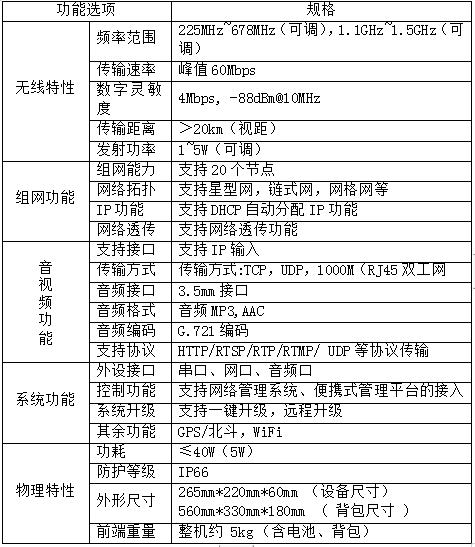1. Background
With the rapid development of our country's economy and society, the threat of mass emergencies and terrorism is becoming increasingly severe. In large-scale shopping malls, stations, airports, docks, scenic spots, large-scale competitions and other places with a high concentration of people, safety accidents are prone to occur and the hazards are huge. The public security and armed police systems, as the responsible departments for emergency response and security, are responsible for the prevention and handling of emergency incidents. Efficient communication capabilities are required; therefore, communication means are particularly important for task command and dispatch, multi-department collaboration, and on-site evidence collection.
At present, the wireless communication system is the most important means of communication for the public security and armed police departments. However, the traditional wireless communication system is mainly point-to-point, with limited coverage, no mobile networking capabilities, and cannot meet the command coordination and multi-department coordination requirements of multiple people performing tasks in complex scenarios.
According to the characteristics of the team's mission, when dealing with emergencies, the on-site environment is often complex, especially in buildings, tunnels, basements, mountains and canyons far away from the road, where ordinary wireless transmission equipment cannot reach, and the "last mile" problem of information transmission is straightforward. Restricting the command effectiveness of troops. Adopt the broadband ad hoc network mode to form a tactical cluster communication network, solve the "last mile" communication transmission problem in squad and individual tactics, and realize the simultaneous transmission of voice, video and data
2. LeSat-X series solutions
LeSat-X series equipment, wireless communication equipment based on software radio architecture, has the characteristics of small size, easy to carry, long transmission distance, and ready-to-use. In the environment without any network, it can quickly deploy networking and provide high-definition video and images in real time. , voice, data and other information to meet the needs of fast and flexible networking in the battlefield.
main feature:
• Possess self-organizing network function, which can effectively deal with various complex scenarios
• Provide wireless transmission solutions for voice and video
• With completely independent intellectual property rights, it can provide customized wireless links for current firefighting equipment
• Ready to use, easy to use, automatic relay, without manual intervention
• Provide a variety of rich interfaces including WiFi, USB, serial port and GPS
LeSat-X series equipment can complete the construction of communication network through multi-hop relay and self-organizing network in places where wireless signals are difficult to cover, such as high-rise buildings, basements and tunnels, without manual operation, and has strong environmental adaptability and convenience. sex.
3. Common cases of armed police applications
Case 1: Area control and armed patrol
Case description: The following cases are large-scale shopping malls, stations, airports, docks, scenic spots, large-scale competitions and other places with a high concentration of people, where safety liability accidents are extremely prone to occur and the hazards are huge. Rapid on-site command and dispatch is realized by deploying the ad hoc network communication system.
Specific content:
1) The aerial mobile point drone is equipped with a Mini Mesh radio station, which can be used as a high-point relay to achieve coverage within 5Km around, and can also be used as a video collection source to return images to the temporary command center.
2) Ground individual soldier mobile point, the armed police members carry the Mesh individual soldier radio on the back or hand-held, collect video images, voice data, etc. and send them back directly to the command center or through relays to the temporary command center.
3) Vehicle-mounted mobile points on the ground. Armed police patrol vehicles are equipped with Mesh vehicle-mounted stations, which collect video images and voice data and send them back directly to the command center or to the temporary command center through relays.
4) The temporary command center uses the Mesh command box as the signal receiving end to monitor the image information of each location in real time and issue command combat tasks.
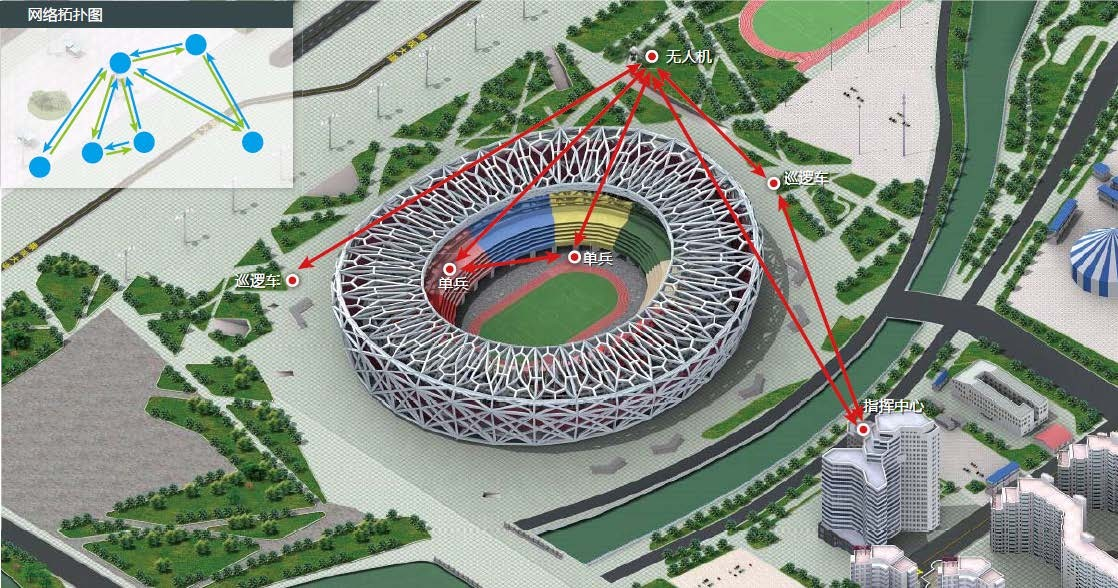
(Figure 1: Application Scenario Schematic, 6 Mesh Nodes)
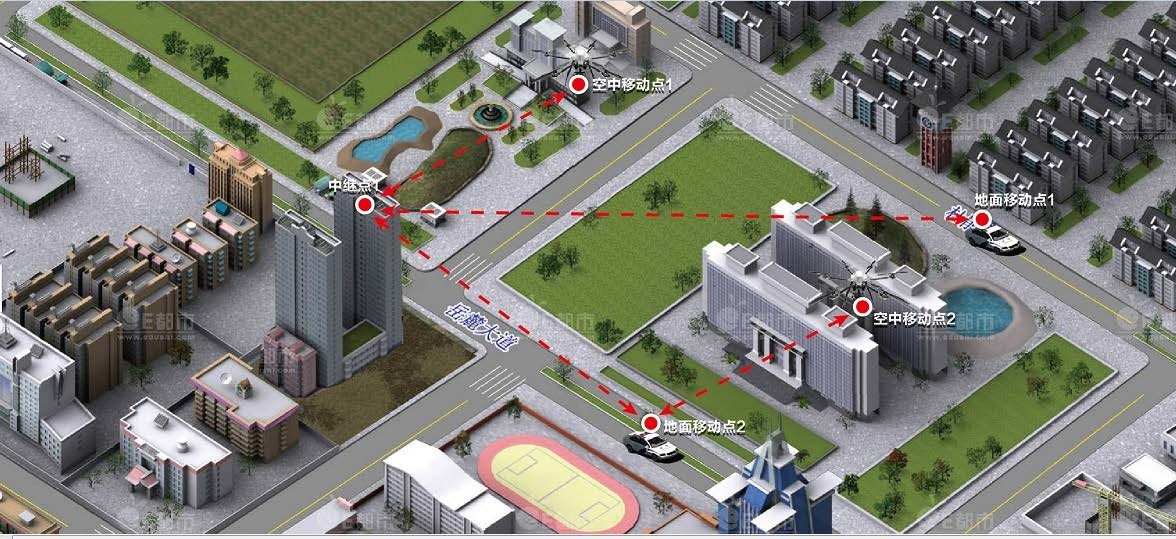
(Figure 2: Application Scenario Schematic, 5 Mesh Nodes)
Case 2: convoy escort
Case description: When a large fleet travels in some remote areas, such as mountains, forests, and closed tunnels, traditional communication methods (such as public networks, private networks, and cluster communications, etc.) cannot complete effective coverage. Large fleets in such areas The smoothness of communication cannot be effectively guaranteed, resulting in the inability of commanders to deal with emergencies and potential risks in a timely manner and effectively prevent them. They lack a comprehensive awareness of the situation when making decisions, and it is difficult to issue command orders effectively. By deploying an ad hoc network communication system, comprehensive monitoring of vehicles can be realized, video conferences can be carried out, and combat tasks can be issued.
Specific content: In the fleet escort application, all vehicle configurations are exactly the same. Any vehicle can be used as a command, relay and front-end escort vehicle, which can be used flexibly to prevent the command point from being changed in case of an emergency. The following lists the formations of the convoy during its march and the automatic response of the system.
(1) The command vehicle communicates directly with other escort vehicles. At this time, the fleet size is small, and the command vehicle can communicate with all other vehicles in one hop. As shown below.

(2) The vehicle in front is far away.
In the practical application of the urban environment, due to the complex terrain and many turns, the vehicle in front (escort vehicle 1) and the command vehicle cannot form a "one-hop" direct connection mode. At this time, as long as escort vehicle 1 can maintain communication with escort vehicle 2, the system can automatically adjust to the relay routing transmission mode. As shown in the figure below, escort vehicle 1 transmits information to the command vehicle through "two hops".

(3) The location of multiple vehicles changes.
According to the needs of security, if the positions of multiple escort vehicles are exchanged, the system will automatically rebuild the route within 2 seconds without affecting the use of the system. As shown in the figure below, command the vehicle to move forward.

(4) Vehicle failure, command position adjustment
If the command vehicle breaks down, the escort vehicle 2 will be temporarily used as the command vehicle, and all parameters do not need any adjustment. Just change the position of the commander.

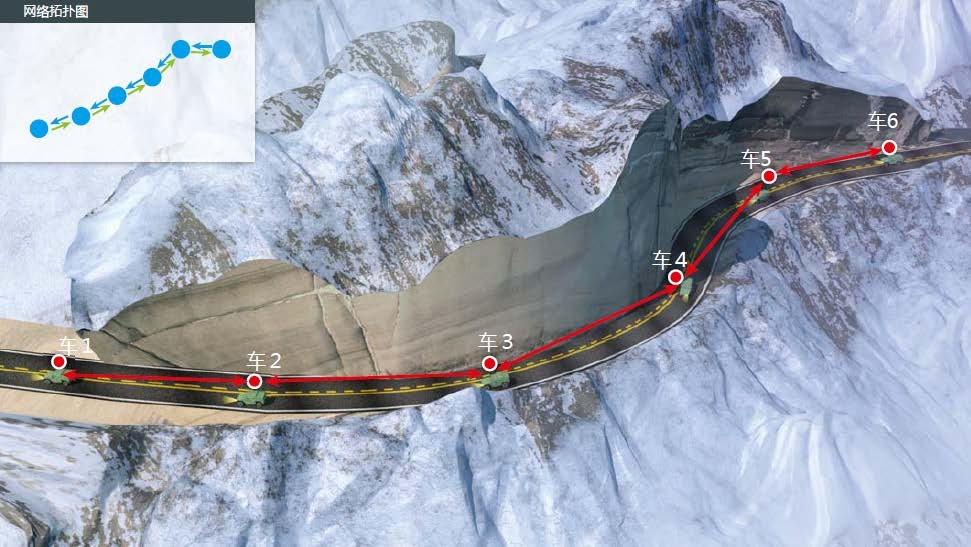
(Figure 3: Application Scenario Schematic, 6 Mesh Nodes)
Case 3: Counter-terrorism rescue
Case description: With the continuous development of urbanized buildings in various places, the number of high-rise buildings, dense buildings, underground shopping malls, underground garages, subway tunnels and urban tunnels is increasing. Effective coverage to ensure reliable on-site command, coordination and dispatch. By deploying the self-organizing network system, individual soldiers can flexibly undertake various tasks such as individual information collection, wireless link relay, and on-site video return through individual portability, so as to achieve seamless coverage of designated areas and quickly get through the crime scene to The communication link of the headquarters ensures the efficient conduct of anti-terrorism work.
Specific content:
Scenario 1: Basement Rescue
1) The armed police fighters carry the ad hoc network radio into the anti-terrorism scene by carrying them on their backs, and carry out on-site image return and voice communication with the external temporary command center through the head-mounted Mini camera and the bone conduction earphone embedded in the helmet.
2) When the transmission distance is not enough, place relay Mesh stations or individual relays to relay, cascade in layers, and finally go deep into the bottom of the basement.
3) Deploy a temporary command center on the ground to conduct real-time command and dispatch on the anti-terrorist scene.
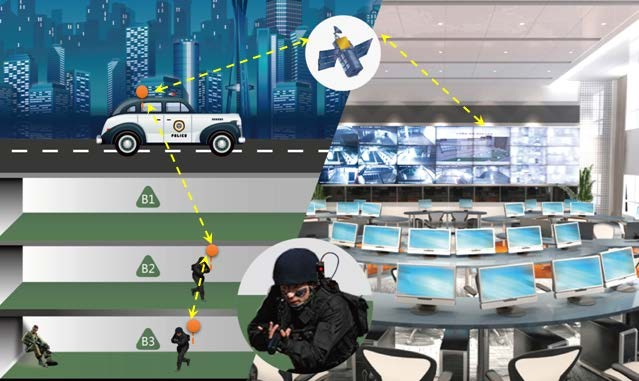
(Figure 4: Application Scenario Schematic, 3 Mesh Nodes)
Scenario 2: Urban Emergency Rescue
The scheme consists of 5 ad hoc network devices in total to realize multi-channel image return in a large playground (1.5 km x 1 km).
▶ Command node: 1 command node is arranged in the forward headquarters, connected to the large screen on the notebook or image decoder, and connected with the rear command center through the remote conference system.
▶ Deployment and control nodes: 2 deployment and control nodes are arranged above the tower, each connected to a pan/tilt, which can achieve 360-degree rotation and 20 times zoom. One of the control nodes also serves as a relay.
▶ Individual soldier nodes: 2 individual soldier nodes are arranged in the playground for mobility, and the farther individual soldier nodes are sent back through a control node relay.
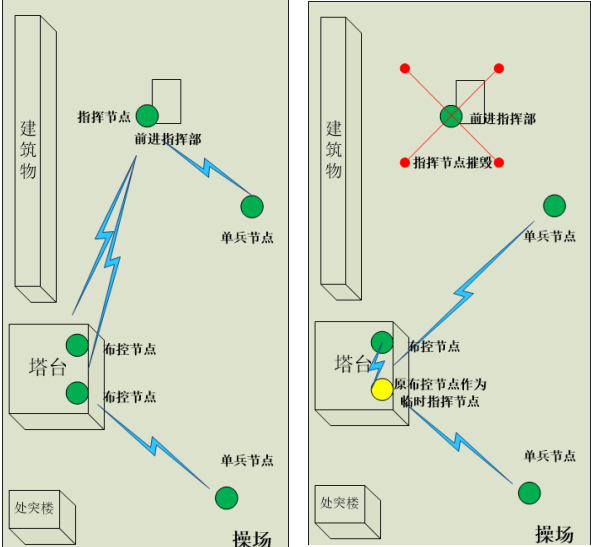
In actual combat, when the forward command post is attacked and destroyed, a control node is selected as a temporary command node. The system automatically reconfigures the route within 2 seconds, and all images are sent to the new command node.
4. Ad hoc network product introduction
Mesh vehicle radio
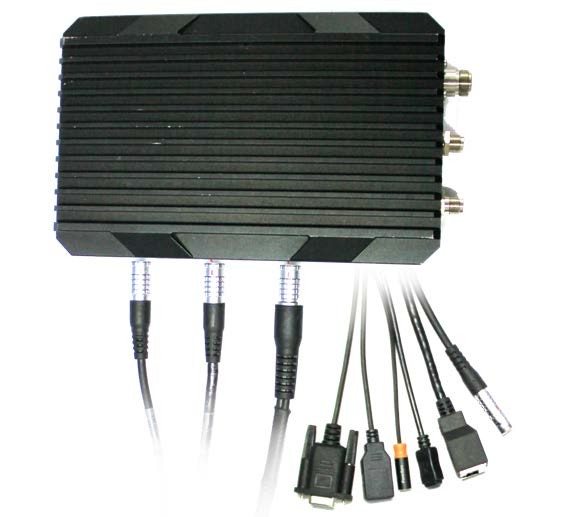
Technical Parameters:
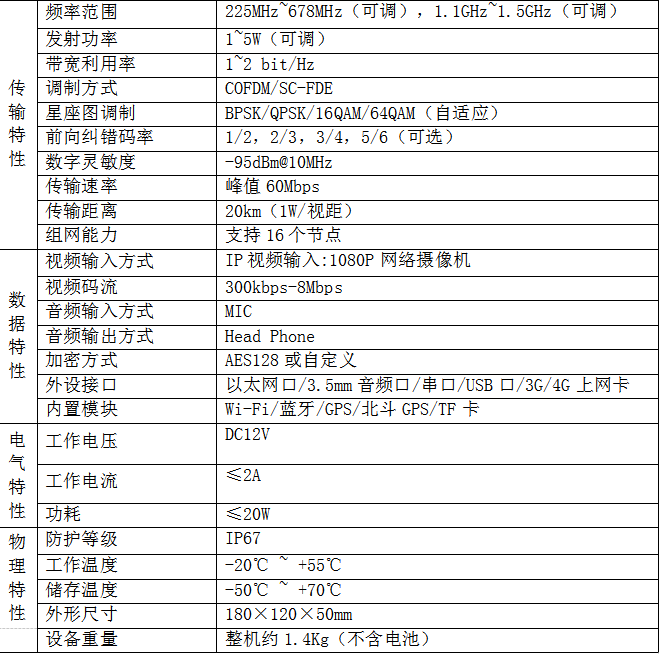
Mesh individual platform
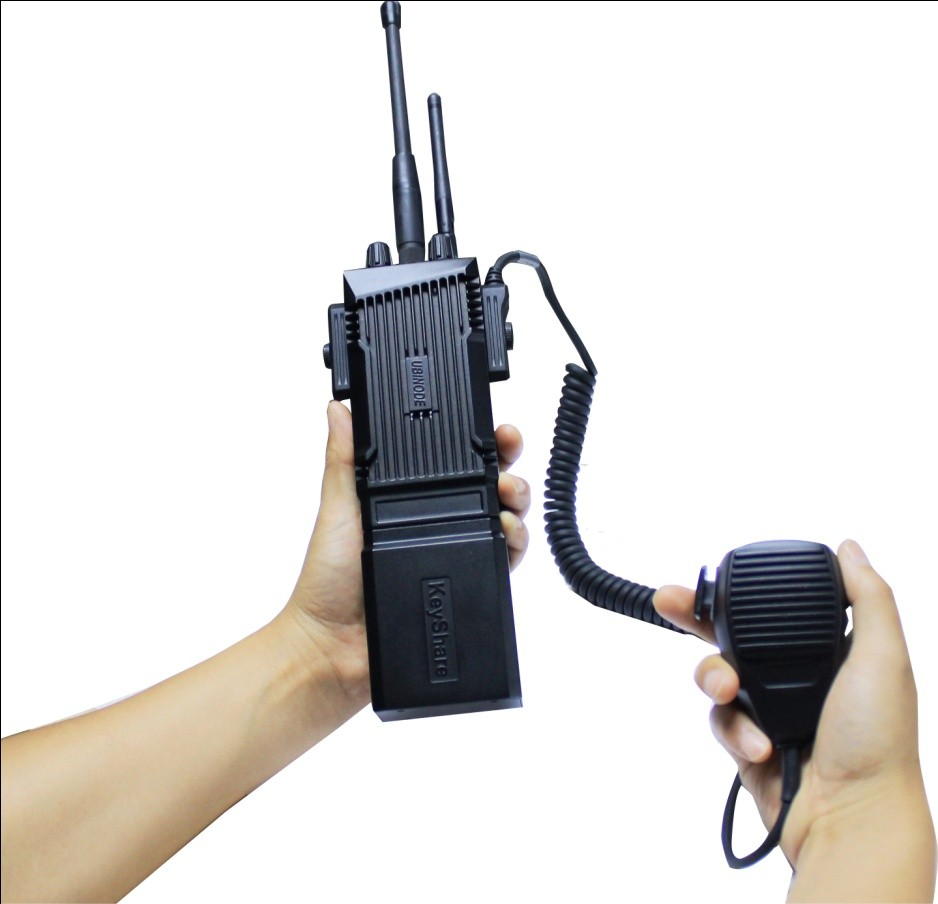
Technical Parameters:
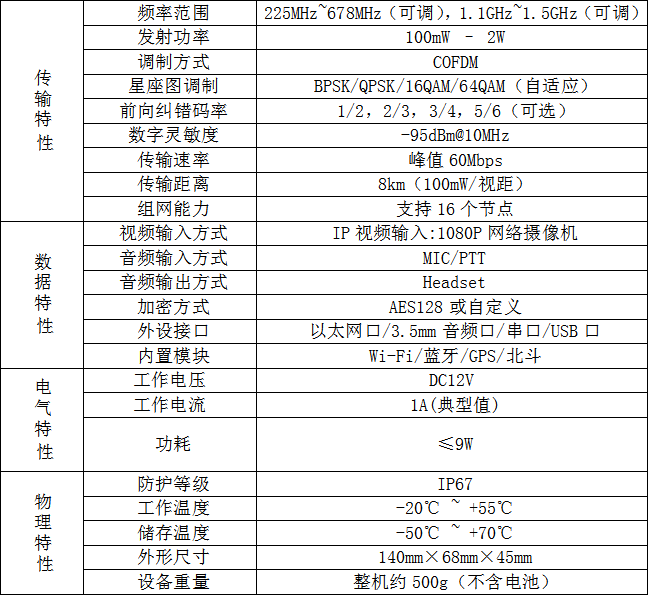
Mesh Command Box
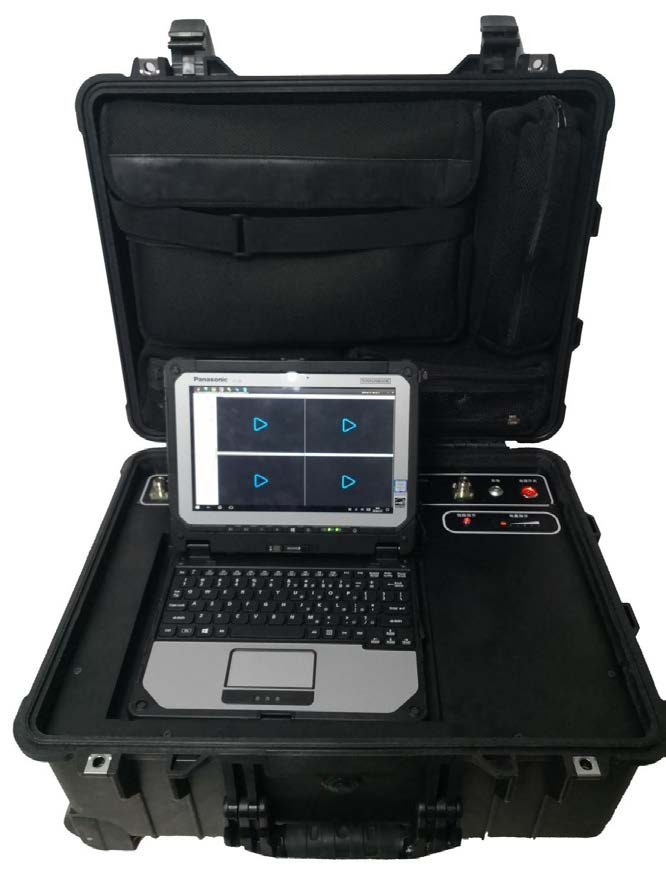
Ad hoc network command box: the entire system and accessories are packaged in a portable box, which is easy to carry and transport. As a temporary command center on site, it is responsible for managing and dispatching services including video, image, voice, etc., and at the same time configures and monitors the respective networking nodes in the network. Provide rich audio and video output interfaces, such as: HDMI, VGA, Audio, IP, etc.
Technical Parameters:
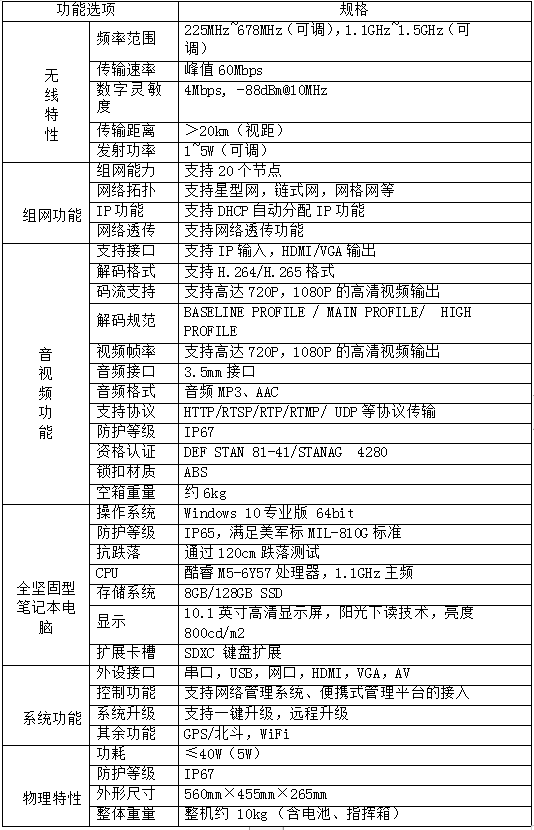
Mesh drone
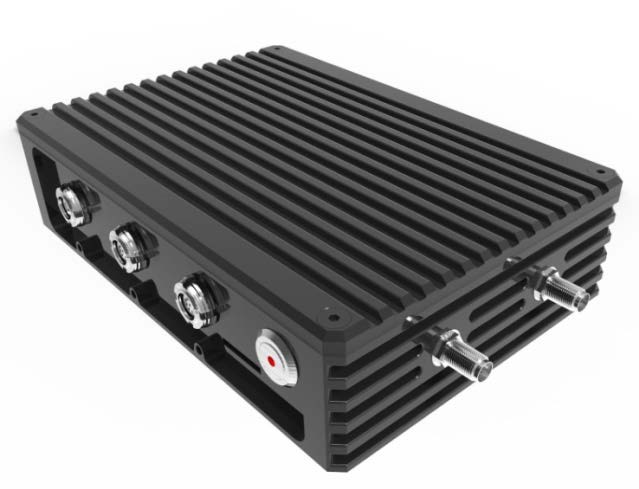
Specifications:
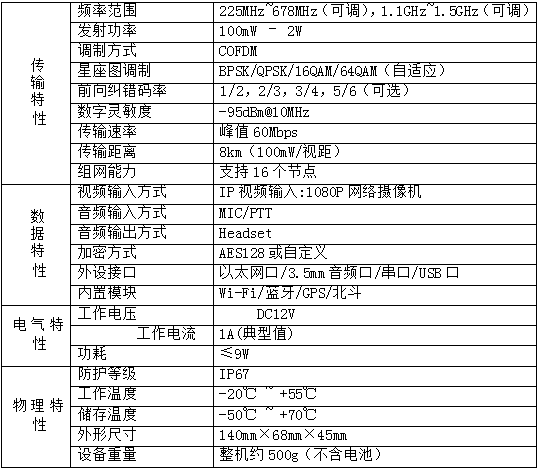
Mesh repeater (link machine)
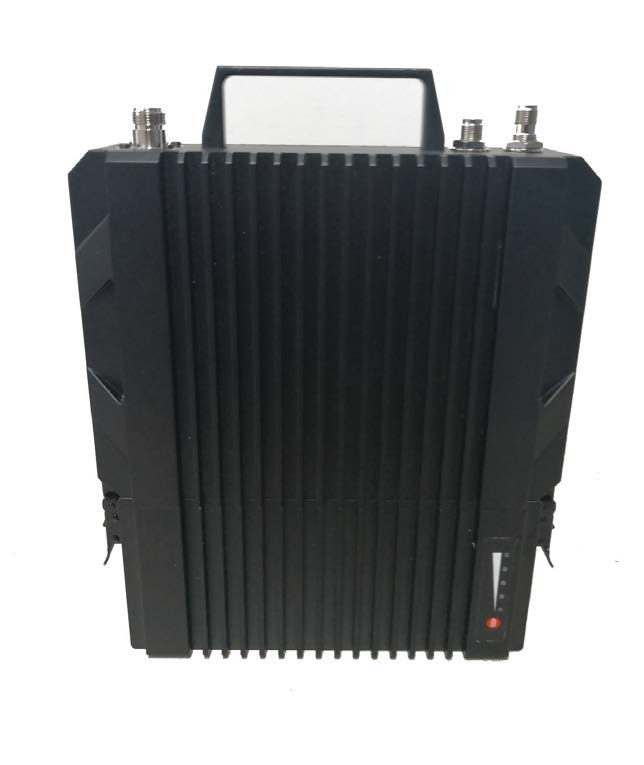
Ad hoc network link machine: The portable link machine acts as the relay node of the ad hoc network to form a network link. It can be carried on the back, and can be carried and moved at will, with flexible use and strong applicability. Any node device can be used as an information collection node, a relay node, or an information output node at the same time; it can be used immediately when it is turned on, and can realize high-definition video, voice, image and other data transmission, which is flexible and easy to deploy. The appearance structure of the product is shown in the figure above.
Specifications:
